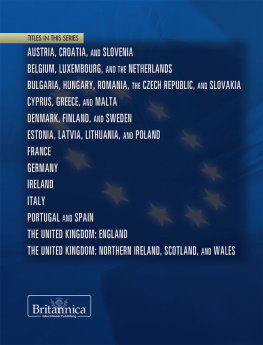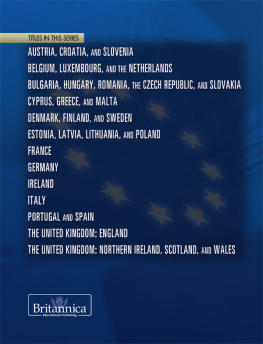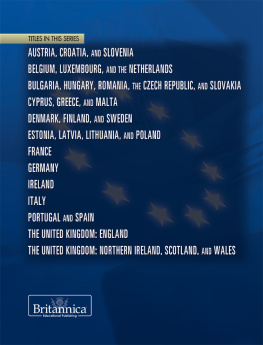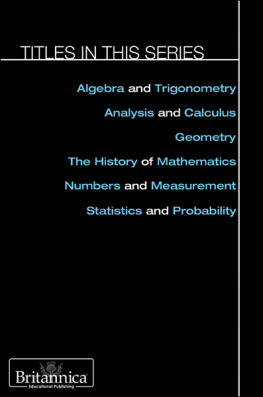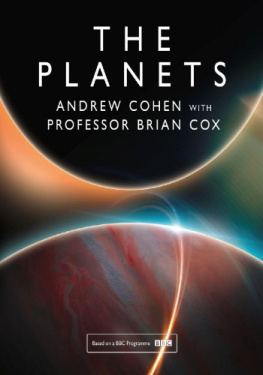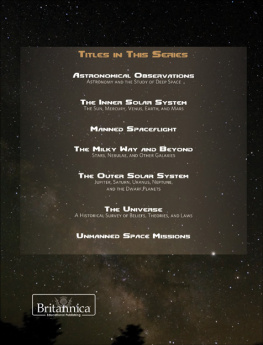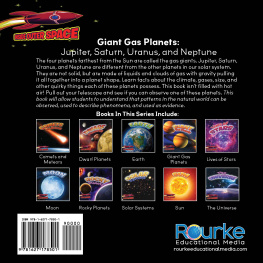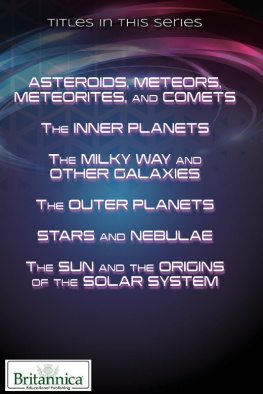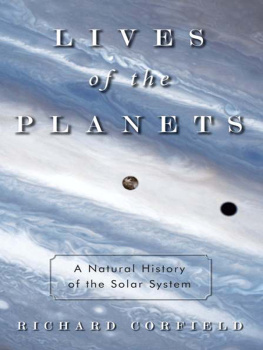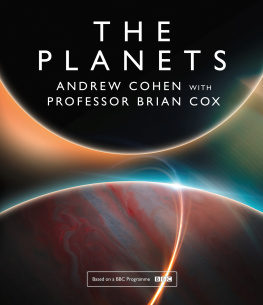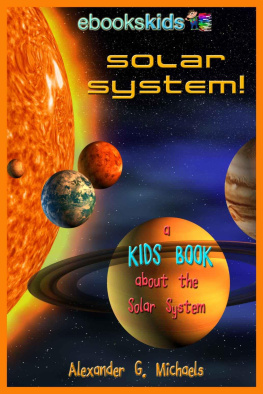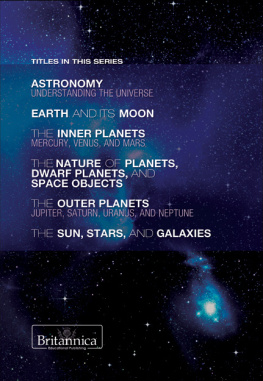THE
OUTER PLANETS
JUPITER, SATURN, URANUS, AND NEPTUNE
the solar system
THE
OUTER PLANETS
JUPITER, SATURN, URANUS, AND NEPTUNE
Edited by Sherman Hollar

Published in 2012 by Britannica Educational Publishing
(a trademark of Encyclopdia Britannica, Inc.)
in association with Rosen Educational Services, LLC
29 East 21st Street, New York, NY 10010.
Copyright 2012 Encyclopdia Britannica, Inc. Britannica, Encyclopdia Britannica, and the Thistle logo are registered trademarks of Encyclopdia Britannica, Inc. All rights reserved.
Rosen Educational Services materials copyright 2012 Rosen Educational Services, LLC.
All rights reserved.
Distributed exclusively by Rosen Educational Services.
For a listing of additional Britannica Educational Publishing titles, call toll free (800) 237-9932.
First Edition
Britannica Educational Publishing
Michael I. Levy: Executive Editor, Encyclopdia Britannica
J.E. Luebering: Director, Core Reference Group, Encyclopdia Britannica
Adam Augustyn: Assistant Manager, Encyclopdia Britannica
Anthony L. Green: Editor, Comptons by Britannica
Michael Anderson: Senior Editor, Comptons by Britannica
Sherman Hollar: Associate Editor, Comptons by Britannica
Marilyn L. Barton: Senior Coordinator, Production Control
Steven Bosco: Director, Editorial Technologies
Lisa S. Braucher: Senior Producer and Data Editor
Yvette Charboneau: Senior Copy Editor
Kathy Nakamura: Manager, Media Acquisition
Rosen Educational Services
Heather M. Moore Niver: Editor
Nelson S: Art Director
Cindy Reiman: Photography Manager
Matthew Cauli: Designer, Cover Design
Introduction by Heather M. Moore Niver
Library of Congress Cataloging-in-Publication Data
The outer planets : Jupiter, Saturn, Uranus, and Neptune / edited by Sherman Hollar.
p. cm.(The solar system)
In association with Britannica Educational Publishing, Rosen Educational Services.
Includes bibliographical references and index.
ISBN 978-1-61530-567-4 (eBook)
1. Outer planets--Juvenile literature. I. Hollar, Sherman.
QB659.O98 2012
523.46dc22
2011001378
Front cover, page : An illustration depicting Saturn as seen from one of its rings. Digital Vision/Getty Images.
Back cover, pp. www.istockphoto.com/Steve Gray; remaining interior background www.istockphoto.com/Sergey Chudakorov.
CONTENTS








introduction

T he most distant and perhaps most intriguing planets in our solar system are known as the outer planets: Jupiter, Saturn, Uranus, and Neptune. Of these bodies, ancient astronomers could see only bright Jupiter and Saturn in the night sky. Thanks to deep-space probes and constantly improving Earth-based observational technology, scientists today are steadily unraveling mysteries about the planets, their moons, and their rings. This book takes you on a journey to the most remote planets in our solar system.
Our first destination is Jupiter, the largest planet in the solar system. It is so big that more than 1,300 Earths could fit inside it. It is the fifth planet from the Sun but bright enough that we can see its multicolored stripes with only a small telescope. Also visible is a red oval called the Great Red Spot, which is a storm in Jupiters atmosphere that has been going on for more than 300 years. Jupiters surface and interior are composed mainly of hydrogen and helium. The planet has 63 known moons and a narrow system of rings. Its orbit is elliptical (oval), and one orbit is equal to about 11.86 Earth years.
Next we encounter Saturn, the second-largest planet in our solar system. Saturn was the most distant planet ancient astronomers could see. Like Jupiter, Saturn has a gaseous surface, mainly made up of hydrogen, and is surrounded by an atmosphere with complex weather patterns. Interior hydrogen is a liquid, and the core is liquid metallic hydrogen. Saturn has a typical elliptical orbit pattern. Its magnificent rings consist largely of water ice and dust particles. Although the rings are thin, the diameter of the main rings extends for some 170,000 miles (270,000 kilometers), and the fainter outer rings extend even farther. Saturn also has more than 60 moons.
Uranus is the third-largest planet we encounter on our journey. It is seventh from the Sun. A small amount of methane in its atmosphere gives it a blue-green hue, but otherwise Uranus appears nearly featureless in visible light. Ancient astronomers could not see Uranus, and even 21st-century telescopes are not powerful enough to show great detail. Like all the planets, Uranus has an oval-shaped orbit, but its rotation is unusual. Instead of rotating almost perpendicular to its orbit like most planets, Uranuss rotation is nearly parallel to its orbit. Uranus has about a dozen narrow rings, which are not as bright as Saturns, and 27 known moons. Like Jupiter and Saturn, this planet is not solid. It is made up of hydrogen, helium, water, and other compounds.

Volcanoes erupt on Io, one of Jupiters Galilean satellites, in a mosaic of images captured by the Galileo spacecraft. One plume visible on Io at the far left is about 90 miles (140 kilometers) high. Another plume at the center of the moon is revealed by its shadow, which extends to the right. Photo NASA/JPL/Caltech (NASA photo # PIA01081)
Finally, we arrive at the farthest planet from the Sun, Neptune. At more than 2.5 billion miles (4 billion kilometers) from Earth, Neptune was not discovered until the mid-1800s. Although Neptune is the smallest of the four outer planets, it is the densest. Neptune is a gas giant, too, and is primarily made up of hydrogen and some helium. Pressures in the planets interior are likely high enough to render it liquid. Neptune spins so quickly that a day (one rotation) lasts only 16 hours. Neptune has a series of six rings, and four of the planets 13 moons orbit within the rings. Curiously, one of Neptunes moons, Titron, revolves around the planet in a direction opposite the planets rotation.
Next page

